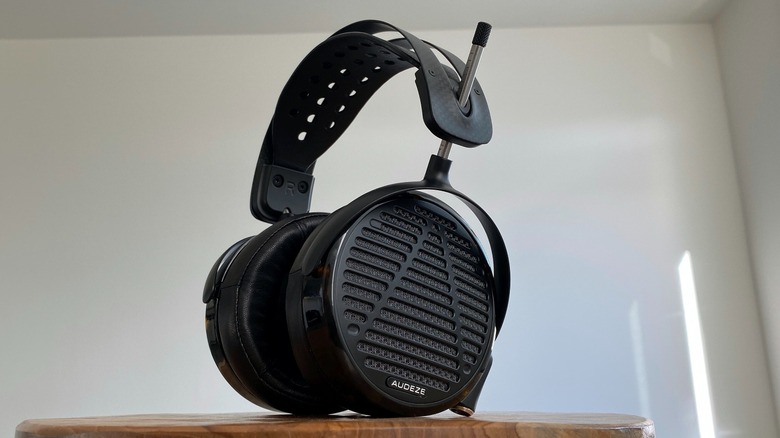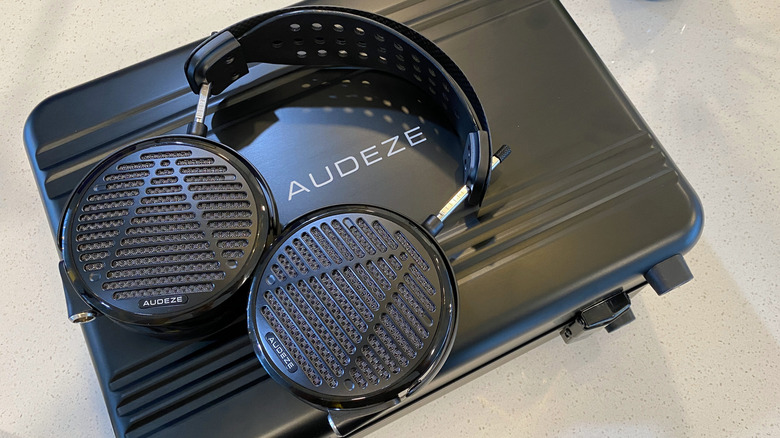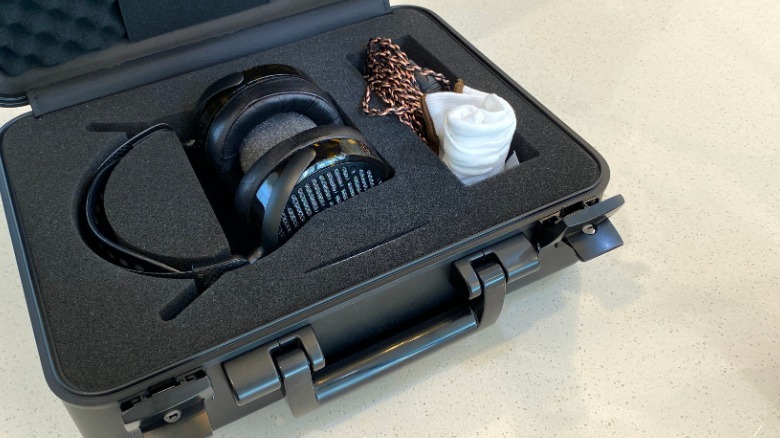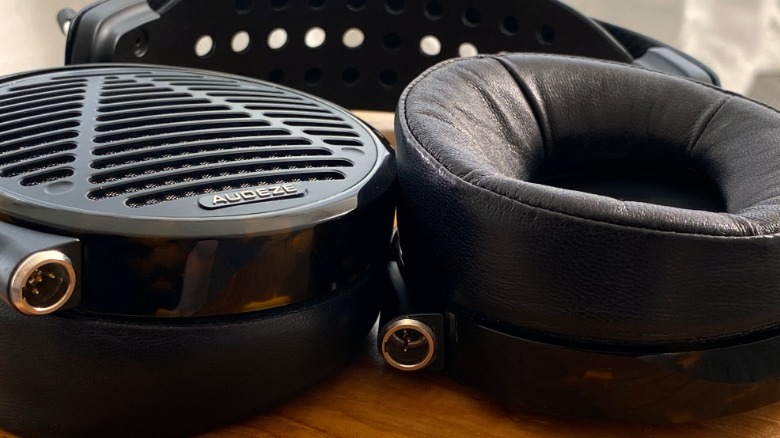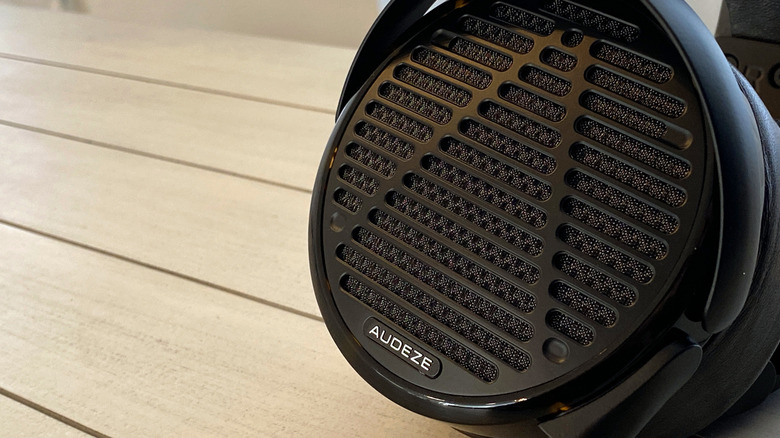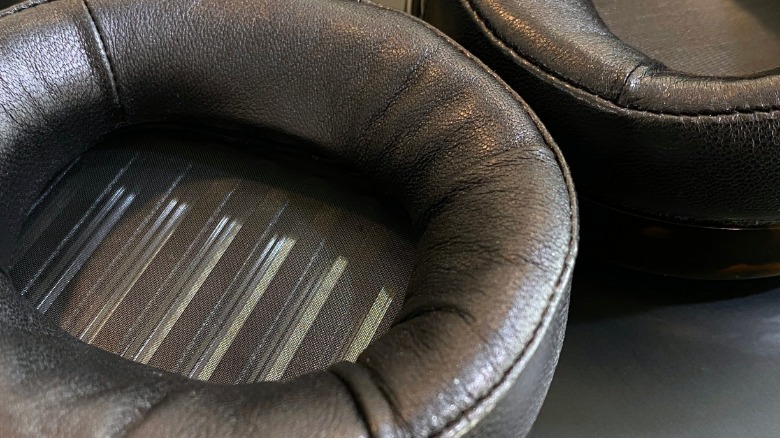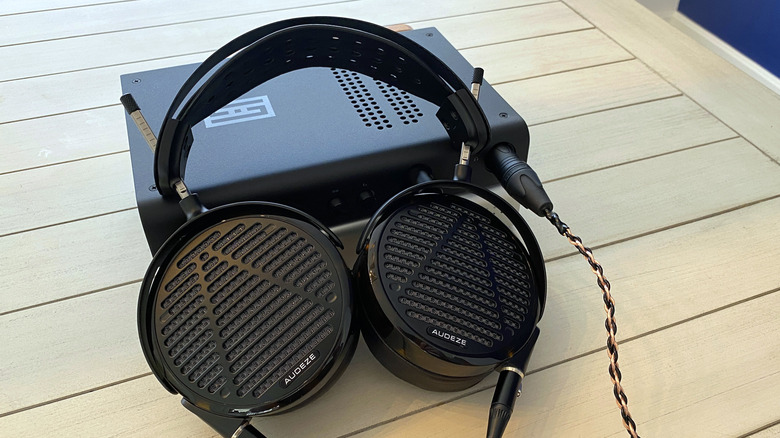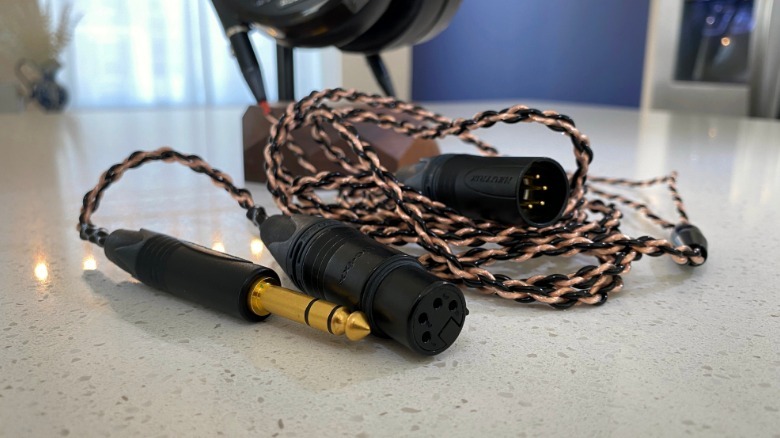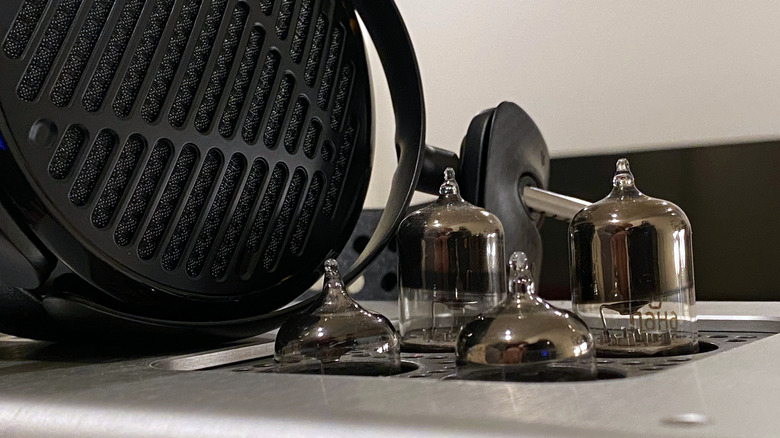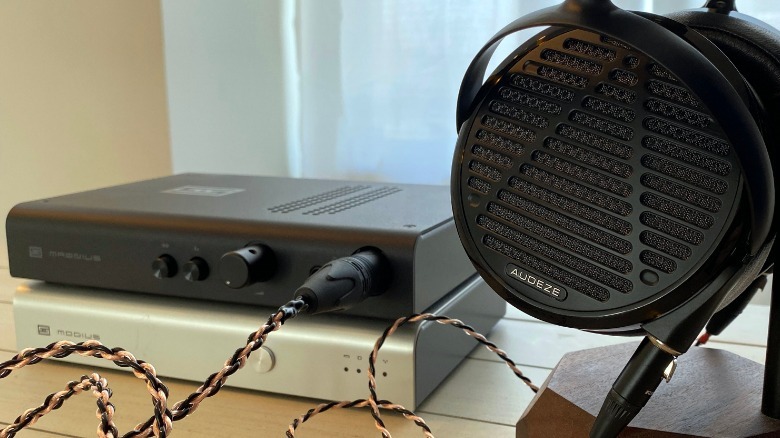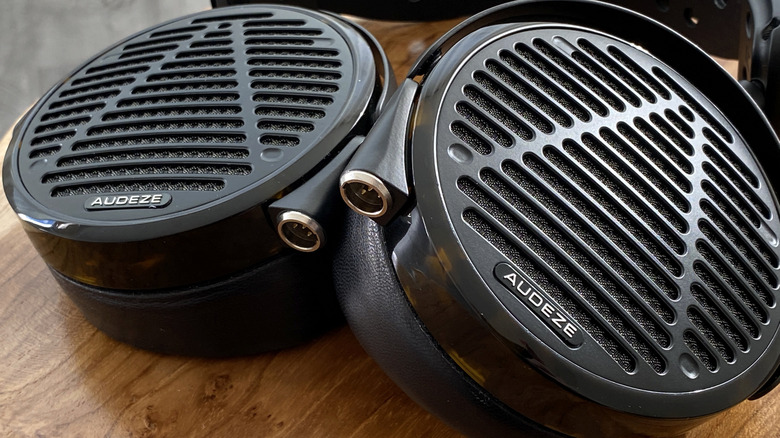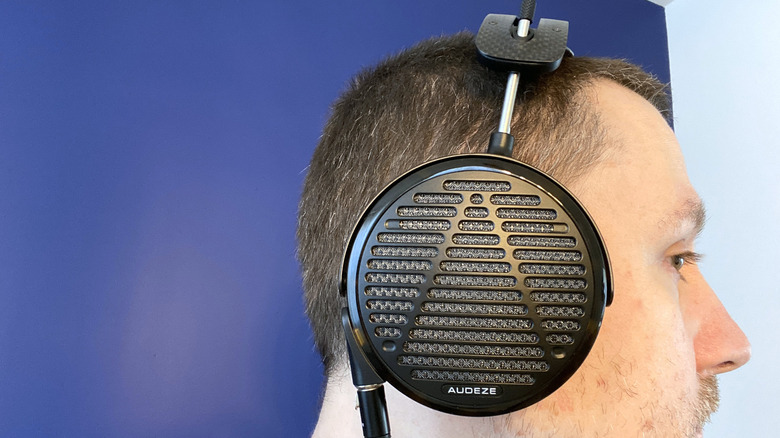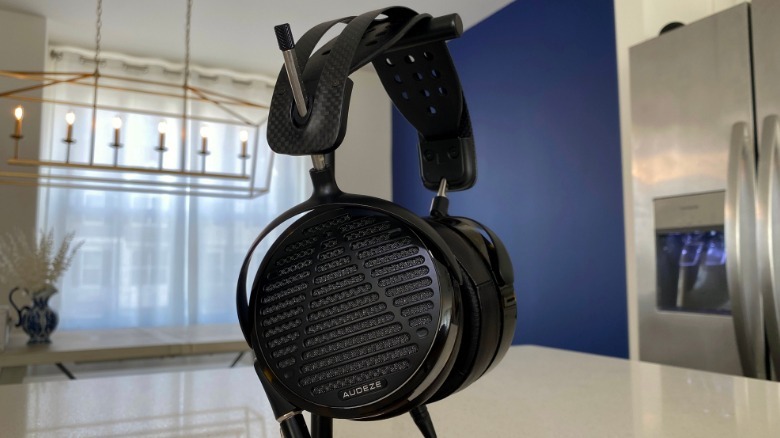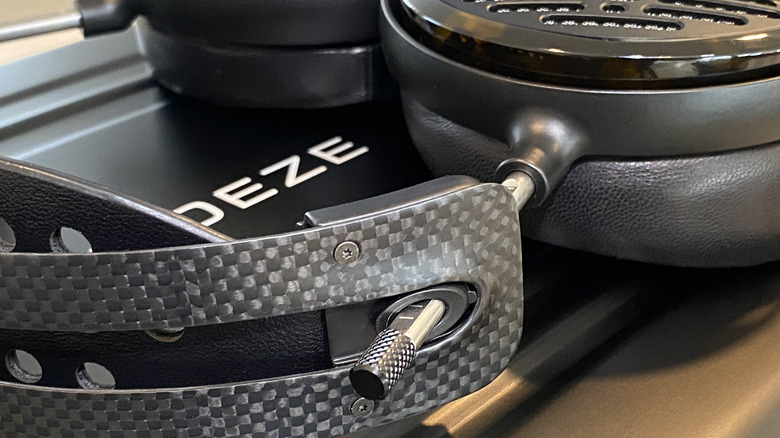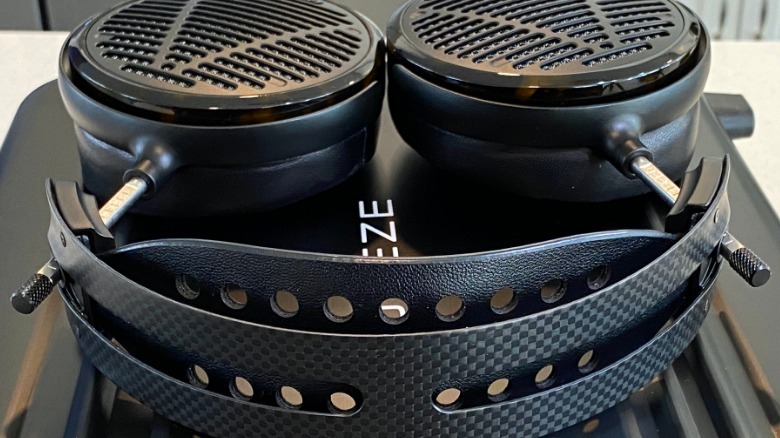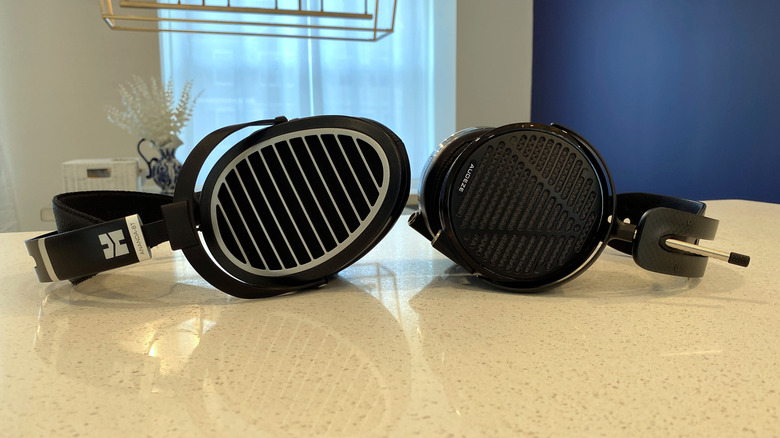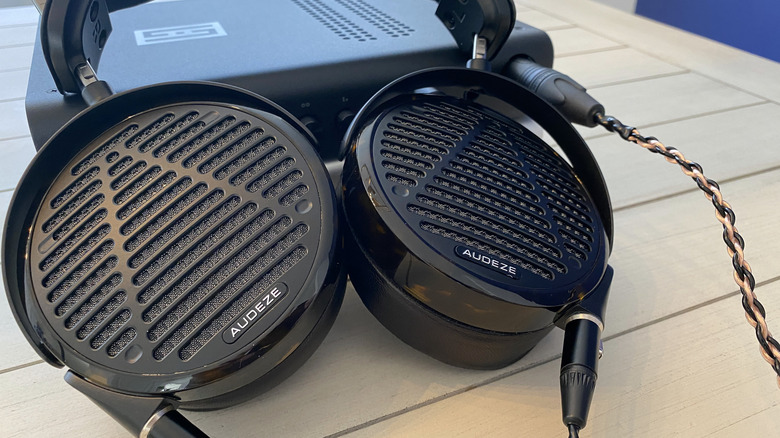Audeze LCD-5 Review: Planar State Of Mind
- Superb, transparent sound
- Comfortable to wear
- No microphonics from the cable
- The lightest model in the current LCD range from Audeze
- The $4,500 price tag excludes most consumers
- The headband could do with a larger option
- Ear pads are glued on
The Audeze LCD-5 is the company's latest flagship planar magnetic headphones with a flagship price to match their technical prowess. For $4,500 you get a completely new design and one of the fastest pairs of headphones I've ever listened to. Designed and hand built in the USA, the LCD range is made to order with 3D-printed diaphragms and "exotic materials."
I've had the pleasure of listening to multiple pairs of headphones from the Audeze range over the years and they never fail to impress. This is the first time I've had their flagship over-ears in for a test, although I have used and loved their Euclid IEMs. Audeze has a house sound known for its warmth and bass response, ever since the release of the LCD-2 a decade ago. Does the LCD-5 deviate from that recipe or is it a completely different animal? Compared to the previous flagship, the LCD-4, this new headphone is smaller, lighter, and with more "exotic materials" than ever before. Let's see if those reductions add up to something great.
Designed to impress
It's not often that a review starts with talk about the device's packaging but this is no ordinary pair of headphones. Audeze's flagship headphones come in an aluminum travel case, like a scaled-down version of a carry-on that wouldn't be amiss in business class. Inside, the LCD-5 nestles in its own custom-cut foam, along with the XLR cable, XLR to 6.35mm adapter, two keys for the flight case, and a pair of white cotton gloves. Yes, this pair of headphones comes with a pair of auctioneer's gloves, so you don't spoil the pristine premium materials with your uncultured fingertip grease.
Audeze has put some premium materials into, onto, and around the LCD-5. Between that and the redesigned and smaller transducer, the new flagship is nearly 40% lighter than the prior LCD-4. That's good for long listening sessions, and if you're anything like me, you won't want to take them off — they sound that good. They look good too, with magnesium grilles surrounded by tortoiseshell acetate. The suspension-style headband is mostly carbon fiber to save on weight and provide all the strength that users of Audeze's carbon steel headbands are used to. The only minor quibble I have is that the headband could do with an option for those of us with larger skulls.
The ear pads have been redesigned, with a sculpted shape that stays away from your ears better while still sealing properly for better bass response. The pads are premium leather and are glued onto the cups. The company says it tested removable pads but none met its standards for sound quality. I'd love a suede or Alcantara option for breathability even if it meant the sound signature changing slightly.
Technical perfection
Most of the headphones on the market today use dynamic drivers to produce sound. From over-ears like AirPods Max to in-ear monitors like Sennheiser IE900, they all use the same basic principle: a single magnet creates a static magnetic field, and a coiled wire on the diaphragm creates a dynamic magnetic field as electricity passes through it. The interplay between the two magnetic fields moves the diaphragm, moving air and creating sound. Audeze is one of the leading headphone manufacturers that use a different technology: planar magnetic drivers.
This change in driver design puts an array of magnets in front and behind the diaphragm (or only one side in the case of the LCD-5). Instead of a coil, the electrical trace on the membrane is spread to cover the whole surface, so it moves uniformly. The membrane is also much thinner than dynamic drivers, with the nano-scale film Audeze uses in the LCD-5 measuring just 0.5 microns. The LCD-5 uses circuit traces optimized with variable widths to create a uniform force along the entire surface. Audeze calls this Parallel Uniforce and says the technology will trickle down to future models in the range.
The other part of the sound generation is the company's Fluxor magnets. Instead of one horizontal magnet with the magnetic field along the length, Fluxor uses two magnetized at 45 degrees diagonally, then arranged so that the North and South poles on one side cancel out and on the other create a larger magnetic field. This increased magnetic field for less weight means lighter headphones and higher resolution and efficiency.
Audio specifications
The planar magnetic drivers in the LCD-5 are capable of reproducing a frequency response between 5Hz and 50kHz. That's wider than the typical range of human hearing, which starts around 20Hz and goes up to 20kHz without discomfort. That means every sound that your ears can hear can be reproduced by the LCD-5. The low impedance of 14 Ohms with a low sensitivity of 90 dB/mW combines to make this particular pair of planars need more current to get to your desired loudness levels for listening.
The LCD-5 comes with a 4-pin XLR cable as standard, for balanced signal use. This cable is made with high-purity braided copper and comes with an adapter in case you need to use a single-ended 6.35mm source.
The 90mm membrane transducer is slightly smaller than the 106mm transducer used in the LCD-4. I've not used that particular Audeze model, but I have used the LCD-3 extensively, which has a similar size driver. You don't lose anything in sound pressure from the smaller drivers, instead, you gain comfort as the headphones are of drastically reduced weight.
Audeze says that the drivers can handle up to 5W RMS power before they suffer damage. In practice, you'll harm your hearing way before the headphones succumb. Always keep an eye on your volume levels, especially as you won't have the usual indicators of excessive volume like distortion or clipping.
What you'll need to listen to them
Audeze ships the LCD-5 with a cable terminated in a 4-pin male XLR connector. The implication is that the company thinks you should use a headphone amp with a balanced drive to the headphones for the best effect. An adapter to turn that XLR connector into a single-ended 6.35mm headphone hack is also included.
Most desktop headphone amps will feature one of these two connectors, and almost any has enough power to supply the minimum 100mW power level Audeze recommends. For peak performance, you'll want to drive them with a source capable of 500mW or even a full watt. Given the cost of the LCD-5, you'll want to power them with something suitable. Thankfully for your wallet, you don't have to match the cost again.
On my usual DAC and Amp stack, the capable Schiit Modius and Magnius, the LCD-5 sings ever more sweetly the more power it gets. The Magnius can put out 6W of power per channel at the LCD-5's impedance of 14 ohms. That's way too much power to comfortably listen to these headphones at and I didn't test them anywhere near full but there wasn't a hint of distortion at any level.
Clearly musical
I tested the LCD-5 on the mid-range Schiit stack of Modius DAC and Magnius headphone amp, on both single-ended and balanced outputs. The first thing that struck me is how fast these drivers are for resolving even the tiniest detail of whatever I listened to. That could be the snares in Baby D's "Let Me Be Your Fantasy" or the extra level of the telephone ringing at the start of The Prodigy's "Poison."
Every single instrument, every note, every multilayered facet was clear and present. It's the only experience I've ever had with headphones that sounded like a high-fidelity pair of floor-standing speakers paired with a hefty amp. I'm pretty sure I'd have to spend more for that setup to get the level of clarity the LCD-5 provides.
Audeze has opted for a more reference tune, moving away from the classic warmth that the company is known for. Instead, they're flatter across the whole frequency range. That's not entirely a bad thing, as there aren't any irritations like spikes in the high frequencies that become fatiguing over time. Anyone who wants the strength of their bass a little weightier can either EQ or use my favorite, the Dolby Atmos for Headphones app for Windows.
Use it for nearly everything
The $4,500 question is perhaps not does it sound good but more, can I use the LCD-5 for everyday listening? We live in a constant stream of content for consumption, from YouTube creators to streamed movies, TV shows, and video games. That's a lot of noise competing for our attention. The LCD-5 excels at anything you can throw at them, from any source. I could be happy if this was the only headset I used for the rest of my life — they're that good.
The only place you won't want to use the LCD-5 is outdoors. Even with a compatible portable headphone amp the outside world is too noisy for the open-backed construction. The 0.5-micron thickness of the driver's diaphragm is also fragile, and risking such an expensive headphone to the elements seems unwise. Pack a pair of wireless ANC headphones for your traveling or commutes, they're cheaper and more suited to the environment.
About that price
The LCD-5 is expensive. At $4,500, nobody could argue against that fact. The jumps in audio quality as you go up in price are subject to diminishing returns. When you pay this much, you get fewer flaws, and perhaps that's the most important aspect of any high-end piece of audio equipment. You also pay for the technology and exotic materials used in its construction. Magnesium alloy isn't cheap, nor is carbon fiber, the specially-constructed Fluxor magnets, and other Audeze innovations like Fazor waveguides.
You also get longevity, as the LCD-5 is designed to be repairable. The planar drivers are warranted for three years, with the earpads, headband, and cable(s) getting a one-year warranty. The exposed screws and bolts in the design enable the headband and other components to be replaced quickly. The earcups are glued on but can be removed and replaced by the user without sending them in for service.
Replacement parts can be bought directly from Audeze and give a good indication of how the overall price goes together. The premium, braided cable with the LCD-5 is $599, ear pads are $80 per pair, and extended yoke rods for larger heads are $95. That's not exclusive to this headphone, as the entire LCD range is designed for repairability. The difference is in the costs of the materials used. For example, the more affordable LCD headphones have spring steel instead of carbon fiber in the headband.
Audiophile alternatives
This segment of the market is definitely one for audiophiles with deep pockets. For an alternative that uses more traditional dynamic drivers and looks every bit as good as it sounds, look at the $3,000 Focal Stellia. We gave this headphone top marks for its "incredibly broad, transparent soundstage," which is exactly what you should expect from any headphone that costs this much. Stellia's 35 Ohm impedance means it can be driven from nearly any source, from desktop headphone amps to the Apple dongle. It's also beautiful, with premium materials like leather, stainless steel, and aluminum.
For a similar planar magnetic driver experience at a similar price, check out Dan Clark Audio's latest, the $4,000 EXPANSE. According to the company, the fourth-generation v-Planar drivers promise low distortion and an "easy" listen. A custom Acoustic Metamaterial Tuning System was designed to remove standing waves in higher frequencies to reduce listening fatigue.
You don't have to spend thousands of dollars on starting your audiophile journey. Hifiman is another well-regarded headphone manufacturer that predominantly uses planar magnetic drivers. The $699 ANANDA headphones are open-backed, have a frequency range of 8Hz to 55kHz, and have a sensitivity of 103dB. For another $100, the ANANDA-BT brings wireless connectivity with HD Bluetooth up to 24-bit, 96kHz, and a powerful, balanced amplifier. It supports aptX HD, HWA, and LDAC Bluetooth codecs.
Audeze LCD-5 Verdict
The Audeze LCD-5 is an idea made flesh, a way for the company to show off the very pinnacle of its technological and auditory advances. They represent the best of what planar magnetic headphones can do, and right from the first time you open the cardboard box to lay eyes on the aluminum suitcase that envelopes them, they exude rarified air. After breathing that air, I don't want to come back to the ground.
You can get great headphones for less than a tenth of the $4,500 price tag of the LCD-5 in Audeze's Amazon listing. Simply looking at prices is the wrong way to compare them. This is the headphone version of a hypercar, tuned to within a nanometer of the redline to perform at its peak. What's different here is that the LCD-5 can be used all day, every day, for all of your music. It doesn't need perfect weather, a clean, blemish-free track, and premium gasoline to sing. All the LCD-5 needs to sing is your favorite music.
